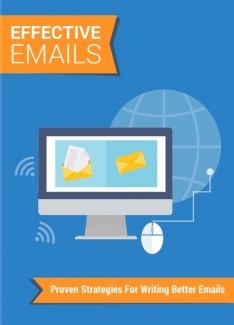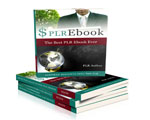
 License Type: Personal Use
License Type: Personal Use  File Size: 4,513 KB
File Size: 4,513 KB File Type: ZIP
File Type: ZIP
 SKU: 56487
SKU: 56487  Shipping: Online Download
Shipping: Online Download
Ebook Sample Content Preview:
Etiquette
Email is a world filled with unwritten rules and potential pitfalls. Whether you're an email marketer building a list of hungry prospects, or a freelancer looking to cold email potential clients, you need to adhere to basic email etiquette. In this chapter we'll go over what you need to know to stay on the good side of whoever you're emailing.
Don't make it too long
Most of us have, at one point or another, come across a person who seem to write a short novel in each email they send out. These emails require you to take a big chunk out of your today to read and reply, and while that may be fine for personal email, it's not a good idea in a business setting. Imagine getting 4 or 5 of these in a single day, you wouldn't be able to get anything done!
Admittedly it is sometimes completely necessary and justifiable to write longer emails, but taking a couple of minutes to "trim the fat" before sending them out is guaranteed to be appreciated by the recipient.
Note that in the case of newsletters the rules are a little bit different. People are generally more forgiving if those are long because they rarely, if ever, reply to them. It's one-way communication for the most part.
Include a greeting and closing
It's good to make a habit of including a courteous greeting and closing in each email you send. It doesn't have to be very formal, even a simple combo of "Hi
There are exceptions though, of course, and if you know you're in a business where it's expected to keep a high level of formality you should just stick to that.
Use a minimum of HTML formatting
Most email clients are capable of reading and sending email with HTML formatting, but this doesn't mean you should go overboard with it. The reason is that except for the most basic formatting tags (bold, italics and so on), email clients tend to parse and display such emails differently. Point is you cannot be sure that the recipient sees the email as you had intended. If you're unlucky it may just show as an unreadable mess. It can even get caught in some spam filters.
- File Size:4,513 KB
- License: Personal Use
- Category:Ebooks
- Tags:2015 Ebooks Personal Use





